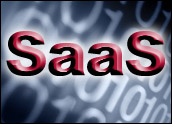
In just a few years, Software as a Service (SaaS) has gone from a curiosity to a mission-critical application, accelerating into mainstream adoption. Faced with a dire financial situation, most businesses are taking advantage of the tremendous economies of scale that SaaS brings. Yet that’s only the beginning. The reality is that businesses have just barely begun to leverage the real power of SaaS to transform the way they work, compete and survive. For it is not just in the applications they currently provide, but with thousands of companies using the same solution every day, SaaS companies are using their data and best practices to develop new applications and intelligence solutions that would be impossible to deliver in a software or managed service environment.
Imagine having the ability to leverage these byproducts of SaaS solutions to drive business efficiencies, innovation and strategic advantage in ways that were impossible with a traditional software model. This is the true strength of SaaS.
Traditional Software Model Holds Users Back
In a traditional, on-premise software environment, the vendor is far removed from its users. Sure, they may have annual user group meetings and sparsely attended online forums, but the vendor has little real insight into the day-to-day challenges of its customers. They cannot foresee important shifts in their clients’ businesses that will foretell future needs. This is a raw deal for customers. Unless they’re a major “player,” individual customers have little clout when it comes to requesting changes from their software provider. They bought the software. Now, for the most part, they’re on their own.
This model does little to benefit software vendors either, who remain more or less in the dark about how they can truly add value for clients. The result: Much needed functionality often does not emerge until a dire need bubbles to the surface. This lack of agility can cause irreparable harm to a client’s competitive position. They need software that will serve emerging and often unexpected needs at a faster pace.
This was echoed in a recent conversation I had with Jeff Kaplan, SaaS guru and head of the analyst firm THINKstrategies. “Companies that purchased legacy applications were denied the benefit of keeping pace with innovation in two ways,” he said. “First, there was no mechanism for the customer base to contribute feedback to vendors in an effective fashion. Second, they often were leery of software upgrades for fear of disrupting their business. In a SaaS environment they needn’t worry about that because all customers are working off essentially the same code base. Moreover, the iterative process of code updates in a SaaS environment alleviates business disruptions, enabling customers to benefit from enhancements immediately.
It’s also important to note that SaaS providers today recognize they’re in the service business, not the software business. Every aspect of the software development process is about taking responsibility for the client’s success, as opposed to past models where a vendor built a product and imposed the burden of success on the client.”
Operating in a Vacuum
Many businesses that initially held back on deploying SaaS for fear of losing their ability to customize have realized they made a poor trade-off. Often the customizations they created did not deliver the desired business benefits they were hoping for, and many times they actually hindered the organizations, making them more vulnerable to reliability problems and cost overruns.
By modifying software to meet one very specific environment, they boxed themselves in and cut off opportunities to benefit from the lessons learned (and enhancements gained) by their peers. This left each software customer operating in a vacuum when it came to managing software to meet ever-changing business requirements. In these turbulent times, that model is simply not practical.
A Future-Proof Relationship
Alternatively, in a SaaS environment, the SaaS provider is intricately tied to the success of its customers. No longer do they simply “sell it and forget it.” They’re working with users each and every day, gaining essential real-time feedback about how software functionality is being applied in myriad real-world settings. They’re learning the ins and outs of their clients’ businesses like never before and shifting their service and support accordingly.
Today, SaaS providers and users alike are beginning to realize a strategic advantage from the SaaS relationship that goes well beyond cost-cutting measures. The SaaS environment fosters ingenuity by creating a symbiotic relationship between the provider and its large community of users.
Having gained a clear picture of how clients really work with their applications, SaaS providers are able to apply this intelligence about clients’ real-world business processes to develop innovative applications that will serve client needs well into the future. SaaS vendors can also utilize the wealth of data gleaned from these engagements to foresee and capitalize on emerging trends, and develop highly relevant new solutions. In this way, SaaS providers are able to proactively adapt and innovate to meet customers’ needs far better than ever before possible. This future-proof relationship protects both parties as they grow and evolve.
Extending Innovations of One to All
In a traditional software model, if one customer innovates, no one else can truly benefit from it. In the SaaS model, however, all new capabilities are immediately accessible to the rest of the customer base. This could include taking advantage of existing integrations built by the SaaS provider or new functionality developed for one client and extended to the greater user community. What’s more, the collaborative SaaS environment, born out of the open source community movement, cultivates continuous enhancements that make for ease of use, lower cost, faster time-to-value and fewer risks. This empowers providers to offer advanced services at a very accelerated pace.
Moreover, in their day-to-day operations, SaaS providers gather intelligence from countless user interactions. This collective knowledge, if leveraged wisely, is enormously powerful. It can not only be used to inform the development of new products but it can also be “productized” to deliver invaluable knowledge assets and market insights to clients.
The Evolution of SaaS
As SaaS matures, we’re seeing providers evolve through three waves:
- Wave 1: Replace mature, single-tenant software applications: The early players in SaaS got started by finding applications ripe to be delivered as a turn-key business service over the wire in a multi-tenant environment. Most early success among SaaS providers was just that: Taking an existing piece of software and finding a better way to deliver it. This was particularly attractive to SMBs who had been vastly underserved by the traditional software model.
- Wave 2: Apply SaaS model to solve new problems that were impractical for existing mature single-tenant software applications: Once these firms created an initial foothold, many realized that the SaaS model itself had inherent advantages for solving problems that could not be tackled in a traditional software model. They leveraged a common, centrally hosted architecture to get multiple companies working together, often across the globe, to solve a common business process.
- Wave 3: Leverage byproducts of SaaS business to launch new, higher value services: Now SaaS companies are realizing their whole business model actually produces assets that are quite valuable. Providers have a clear picture of how their software is being used. Over time, they can aggregate data collected through these interactions and report back to customers, giving them unprecedented insights into their individual performance as well as industry-wide benchmarks.
By leveraging the information assets produced as a byproduct of the SaaS provider’s business, SaaS customers can gain access to an unprecedented wealth of knowledge that would otherwise not be available. If leveraged wisely, this information is enormously powerful for developing new functionality, providing greater efficiencies, and adapting to emerging needs. As applications grow and adapt, everyone benefits yet again from the economies of scale of the SaaS delivery model.
Ultimately, SaaS ensures that providers are tightly connected to the success of their users. For the first time, customers have a seat at the table in directing their software roadmap. In this highly collaborative environment, they quickly benefit from an outpouring of innovation that would have been unattainable with a traditional software model. They can not only capitalize on a wealth of new functionality but gain access to unparalleled information assets that will prove beneficial for strategic planning. And they continue to gain additional financial advantages with each new product enhancement. In the end, those who thought SaaS was good just for cost cutting haven’t seen anything yet!
Jim Frome is chief strategy officer and executive vice president of SPS Commerce.



































Social Media
See all Social Media